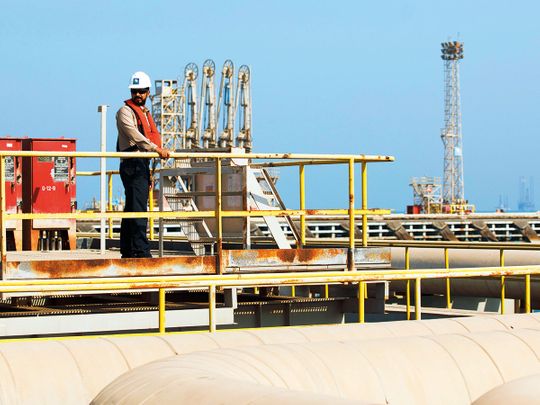
Abu Dhabi
The latest salvo in the US-China trade war, which saw new tariffs being imposed by both sides, could impact oil prices negatively, analysts said.
The latest tariffs officially came into effect on Sunday, with the US placing 15 per cent tariffs on over 3,000 Chinese products worth $110 billion. The US tariffs had been promised for weeks by US president Donald Trump, which in turn saw China announcing their own new batch of tariffs, which also came into affect on Sunday on $75 billion worth of American goods, including US crude oil. Further tariffs are also set to kick in December by both countries unless a trade agreement is agreed on before then.
The new tit-for-tat tariffs are likely to offset the oil market’s short-term gains last week on the back of lower US oil rig counts as well as a massive drop in US crude oil inventories, which were down by 10 million barrels, according to the Energy Information Administration.
Oil markets on Friday closed with Brent trading at $59.25 and West Texas Intermediate (WTI) on $55.10, with both down compared to the previous monthly closing.
“Oil markets could not escape the maelstrom that captured nearly all risk assets in August, with both Brent and WTI futures recording sizeable declines. Brent futures fell 7.3 per cent for the month while WTI ended the month down almost 6 per cent,” said Edward Bell, commodity analyst, Global Markets and Treasury, Emirates NBD.
7.3 %
Decline in Brent futures for the month of August“A combination of new tariffs being imposed by China and the US, weakening data from major economies and uncertainty over the next steps from central banks all worked to weigh on the outlook for crude oil, particularly for demand in the coming months,” he added, highlighting the current market volatilities weighing down on oil prices.
Commenting on Opec’s production during August, Bell said that Opec members were still largely following through with their production cut agreement, with Saudi Arabia continuing to take the lead.
“Saudi Arabia’s production levelled off at 9.63 million bpd, down only slightly month to month while output in the UAE was unchanged at 3.07 million bpd according to Reuters data.
3.07 m
UAE's daily crude output last month (in barrels per day)“Compliance with the December 2018 production cut agreement remains high: collective compliance is at 135 per cent, down from 162 per cent a month previously. Saudi Arabia continues to enormously over-deliver, hitting 311 per cent compliance with its targets, while the UAE is producing roughly exactly on target,” he added.U
Despite Opec’s cuts, US productivity remains high even in the face of weekly lower rig counts Bell highlighted.
“In the US, the drilling rig count continued to fall, losing 12 rigs last week after declining by 16 in the previous week. The total count is now almost 120 rigs lower than it was a year ago.
120
Fewer US oil rigs now in operation from a year ago“The US rig count may have been declining for most of the year but production in the US is heading in the opposite direction. Output hit 12.5 million bpd in the week ending August 23, up 1.5 million bpd year-on-year,” he added.












